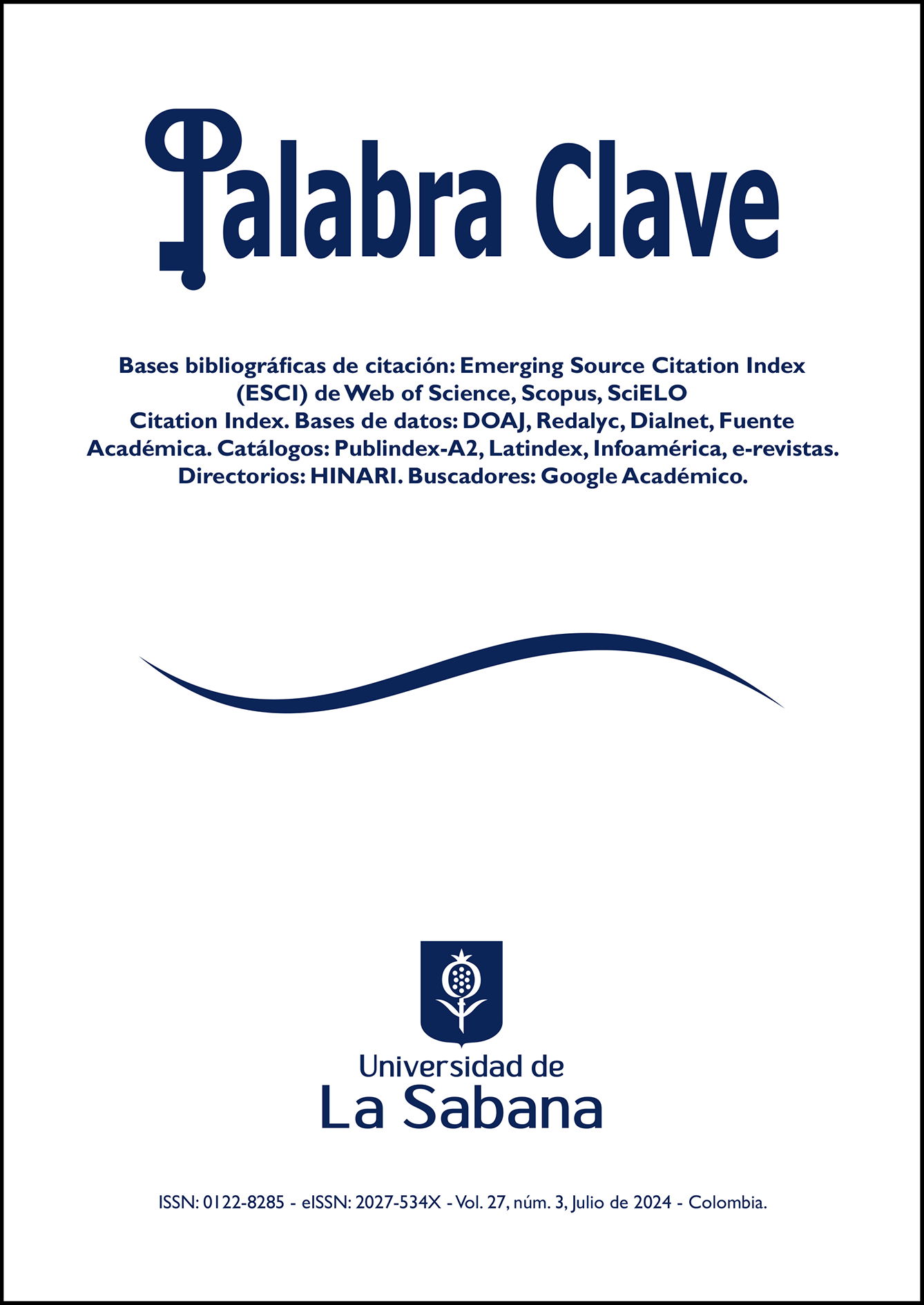Analysis and Perception of Comics Journalism for Critical Thinking Development in University Students of Communication
DOI:
https://doi.org/10.5294/pacla.2024.27.3.3Keywords:
Comics, artificial intelligence, critical thinking, journalism, didactic proposalAbstract
Since audiences are constantly flooded with information, journalists face constant challenges when transmitting news. The latest generations find in the image a strategy that enables questioning and rigorous data analysis while attracting larger audiences. This article examines the effectiveness of the language of comics in preparing journalistic reports and developing skills associated with critical thinking. It also measures the perception of comics reportages in Generation Z university audiences. All this was materialized in a didactic proposal involving Journalism students from Universidad Europea de Madrid. Positive conclusions are drawn from the results regarding the use of the verbal and iconic language of comics, both in creation and perception. However, we detected problems related to the production of artificial intelligence-generated images.
Downloads
References
Abril, G. y Spottorno, C. (2016). La grieta. Astiberri.
Abril, G. y Spottorno, C. (2021). La falla. Astiberri.
Bartual, R. (2014). Narraciones gráficas. Del códice medieval al cómic. Factor Crítico.
Benaissa Pedriza, S. (2017). El Slow Journalism en la era de la “infoxicación”. Doxa Comunicación, 25, 129-148. https://doi.org/10.31921/doxacom.n25a6
Carrión, J. y Forniés, S. (2015). Barcelona. Los vagabundos de la chatarra. Norma.
Cerezo, P. (2016). La Generación Z y la información. Revista de Estudios de Juventud, 114, 95-109.
Chute, H. (2016). Disaster Drawn. Visual Witness, Comics and Documentary Form. The Belknap Press.
Echevarría Llombart, B. (2010). El reportaje periodístico: una radiografía de la realidad. Comunicación Social.
Espín, M. (2012). Periodismo sin ánimo de lucro: una esperanza a la crisis informativa. MarcEspin, 14 de marzo. http://marcespin.com/2012/03/14/periodismo-sin-animo-de-lucro-una-esperanza-a-la-crisis-informativa-en-espanol/
Espiña Barros, D. (2014). Apuntes a Notas al pie de Gaza. El cómic periodístico de Joe Sacco. CuCo, Cuadernos de Cómic, 2, 92-108. https://doi.org/10.37536/cuco.2014.2.1325
Fontcuberta, J. (2016). La furia de las imágenes. Notas sobre la postfotografía. Galaxia Gutenberg.
García, S. (2010). La novela gráfica. Astiberri.
García-Ull, F. J. (2021). “Deepfakes”: el próximo reto en la detección de noticias falsas. Anàlisi, 64, 103-120.
Gimeno, S. y Pérez, I. (2008). Comprender y transformar la enseñanza. Morata.
Giner, M. Á. y Durán, C. (2018). El día 3. Astiberri.
Glidden, S. (2017). Oscuridades programadas. Salamandra Graphic.
Guibert, E., Lefèvre, D. y Lemercier, F. (2019 [2003-2006]). El fotógrafo. Astiberri.
Juntunen, L. (2010). Explaining the need for speed. Speed and competition as challenges to journalism ethics. En Cushion, St. Lewis y J. (eds.), The rise of 24-hour news television: Global perspectives (pp. 167-182). Peter Lang.
Krug, N. (2020). Heimat. Lejos de mi hogar. Salamandra Graphic.
Lai, E. R. (2011). Critical thinking: A literature review. Pearson´s Research Reports.
Le Masurier, M. (2015). What is slow journalism. Journalism Practice, 2(9), 138-152. https://doi.org/10.1080/17512786.2014.916471
Matos Agudo, D. (2017). Periodismo cómic. Una historia del género desde los pioneros a Joe Sacco. Comunicación Social.
Martín Vivaldi, G. (1978). Géneros periodísticos. Reportaje. Crónica. Artículo. Paraninfo.
Martínez Luna, S. (2019). Cultura Visual. La pregunta por la imagen. Sans Soleil.
Moreno Espinosa, P. (2012). El reportaje televisivo y sus interpretaciones de la realidad. Estudios sobre el Mensaje Periodístico, 18(2), 823-832. https://doi.org/10.5209/rev_ESMP.2012.v18.n2.41048
Onieva-López, J. (2015). El cómic “online” como recurso didáctico en el aula. Webs y aplicaciones móviles. Huarte de San Juan. Filología y Didáctica de la Lengua, 15, 105-127.
Ortega, I. y Vilanova, N. (2017). Generación Z. Todo lo que necesitas saber sobre los jóvenes que han dejado viejos a los millennials. Plataforma.
Patterson, C. M. (2003). El buen reportaje, su estructura y características. Revista Latina de Comunicación Social, 56, 643-656.
Pavlik, J. (2001). Journalism and new media. Columbia University Press.
Phan, H. P. (2010). Critical thinking as a self-regulatory process component in teaching and learning. Psicothema, 22(2), 284-292.
Prior, M. y Danide (2011). Fagocitosis. Glénat.
Rodrigo-Alsina, M. (1995). El uso de los discursos de los medios de comunicación. Signa: Revista de la Asociación Española de Semiótica, 4, 201-210. https://doi.org/10.5944/signa.vol4.1995.33179
Rosique-Cedillo, G. y Barranquero-Carretero, A. (2015). Periodismo lento (slow journalism) en la era de la inmediatez. Experiencias en Iberoamérica. El Profesional de la Información, 4(24), 451-462. https://doi.org/10.3145/epi.2015.jul.12
Sacco, J. (2009). Notas al pie de Gaza. Reservoir Books.
Sacco, J. (2012). Reportajes. Reservoir Books.
Saló, A. (2012). Simiocracia: crónica de la gran resaca económica. Debolsillo.
Published
How to Cite
Issue
Section
License
Copyright (c) 2024 Elena Masarah Revuelta, Almudena Revilla Guijarro, Gerardo Vilches Fuentes

This work is licensed under a Creative Commons Attribution 4.0 International License.
1. Proposed Policy for Journals That Offer Open Access
Authors who publish with this journal agree to the following terms:
- Authors retain copyright and grant the journal right of first publication with the work simultaneously licensed under a Creative Commons Attribution License that allows others to share the work with an acknowledgement of the work's authorship and initial publication in this journal.
Funding data
-
Universidad Europea de Madrid
Grant numbers XSAN002309 -
Fundación Banco Santander
Grant numbers XSAN002309









